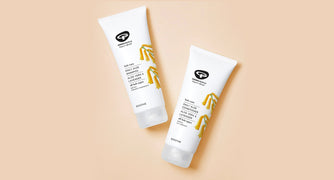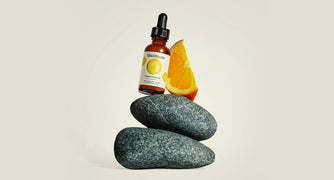I think that there is often a misconception in our society about what ‘mental health’ is. We can often associate it with serious mental disorder or illness but I believe that as well as those very serious conditions, it is something that affects us all at some point in our lives. Have you ever been so stressed that you couldn’t sleep or eat? So unhappy that you felt that you couldn’t get out of bed? So anxious and fearful that you felt physically sick? These are all physiological manifestations of something being out of balance with your mental health.
The mind and body are intrinsically linked. Here, I am writing with yoga in mind and thinking of yoga as modern day psychotherapy for the body and mind. In yoga we use asanas (physical postures), mudras (physical gestures) and mantras (short words, phrases or affirmations) to maintain health of body and mind but I believe that pranayama (working with the breath) is the thread that links our physical body with our mind.
Our breath is a physiological manifestation of our mental state. Our breath is steady, slow and comfortable when we are sleeping or relaxed and our breath is shallow, rapid and rasping when we are afraid.
“the breath not only influences the body and the mind but can serve as a powerful instrument for inducing states of higher consciousness.”
Yoga and Psychotherapy by Swami Rama, Rudolph Ballentine, MD and Swami Ajaya PHD p26
Breath awareness has been proven in scientific research to successfully treat medical conditions such as hypertension and anxiety. However, it is using techniques that work the physical body (muscles) as well as the breath that have proved the most effective thus showing yoga’s power as a psychotherapy for the bodymind. Research by Swami Rama, Rudolph Ballentine MD and Swami Ayaya PHD showed that:
“the greatest improvement was in those who had undergone a combined treatment where both breathing and muscle relaxation were used.”
We often have to work our muscles in order to understand how to relax them. Working to first contract a muscle means we can more easily then feel release. In modern society people often don’t realise how they are holding tension in the body and yoga is the perfect method to demonstrate to people where the tension is and how to release it. How is it possible to breathe properly making use of the full capacity of our lungs and the correct use of our diaphragms unless we practice some kind of correct posture?
“In this light, it is clear that the practice of unrestraining the breath can be seen as synonymous with the identification and release of the bodily tensions that obstruct the expression of our system’s intrinsic equilibrium.”
Yoga and Psychotherapy by Swami Rama, Rudolph Ballentine, MD and Swami Ajaya PHD quoting from “Anxiety Reduction Through Breathing and Muscle Relaxation Training: Cognitive and Affective Components,” PhD dissertation Duke University , 1973 Alfred L Scopp p27
Yoga Anatomy by Leslie Kaminoff and Amy Matthews p21
Working with posture and with the breath really can release physical tension and mental distress. It is a physiological fact that our parasympathetic nervous system (our basic rest and digest response) is activated by full diaphragmatic breathing.
However, I realise that “it is only when you “quote” from your own experience that your words have weight.”
The Yoga Sutras of Patanjali Translation and Commentary by Sri Swami Satchidananda p78
I could talk and write all day about the benefits of the breath and yoga as a whole but isn’t it always more believable when someone tells you of their real experience in their life or when you experience something for yourself?
I first became interested in the human mind at an early age. I was diagnosed with type 1 diabetes at the age of 12 and subsequently began to suffer from debilitating panic attacks and claustrophobia stemming from an innate fear of having lost control of my body. Of course, I didn’t know that this was the reason at the time, but I was desperate to seek help for my psychological condition. It had begun to severely impact my daily life as I was unable to use everyday things like lifts and trains due to the claustrophobia and it was becoming harder and harder to try to hide my panic attacks from my peers. I also knew I shortly had to take a flight and being trapped on a plane was the most terrifying thing I could imagine. I would have daily panic attacks at the thought of having to get on this plane to the extent that I was prescribed Valium by my GP as he could think of no other way to help. Luckily GPs nowadays are usually much better informed.
Desperate to help my plight, my family tracked down a rather amazing gentleman named Dr John Wilkinson – a medical doctor turned ‘hypnotist’ who was able to cure anxiety disorders through a process he called ‘self-hypnosis’. He had previously worked with deep sea divers who had suffered panic attacks and claustrophobia due to the nature of their job and had enabled them to go back to work. I attended weekly individual sessions with him where I was taught ‘self-hypnosis’ which he advised I practice assiduously and daily. I was utterly sceptical about ‘this breathing nonsense’ but to my utter surprise it worked and I was completely free of all psychological symptoms and their physical manifestations within 6 months.
What was this mysterious ‘self-hypnosis’? Diaphragmatic breathing coupled with mediation and visualisation. In other words, yoga breathing and meditation. Thus I learnt early on the huge power of the breath. Dr Wilkinson became a friend and I continued to visit him for many years. I only discovered after his death at 91 that he had turned to working with the breath after TB as a young man had left him with the use of only half a lung. The power of the breath is truly fantastic.
Just take five minutes today to notice how you are breathing. Just sit in a quiet corner and become aware of your breath. Are you breathing just with your upper chest? Are you breathing too quickly? Don’t judge yourself but just be aware. Daily practice of just breathing in a relaxed way is the first step to better mental health for everyone.
If you want to try some yoga then visit The Yoga House website to find out more.

www.theyogahouse.co.uk






